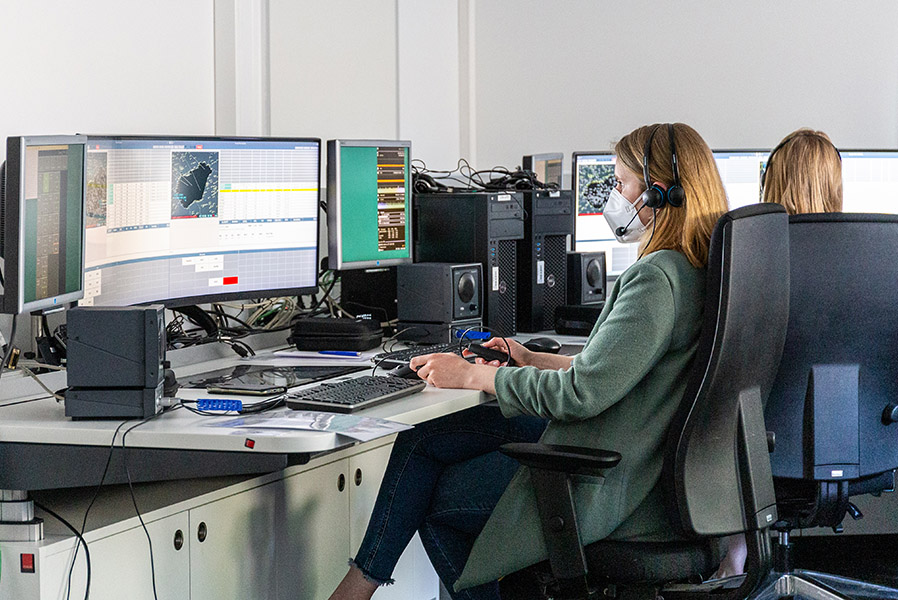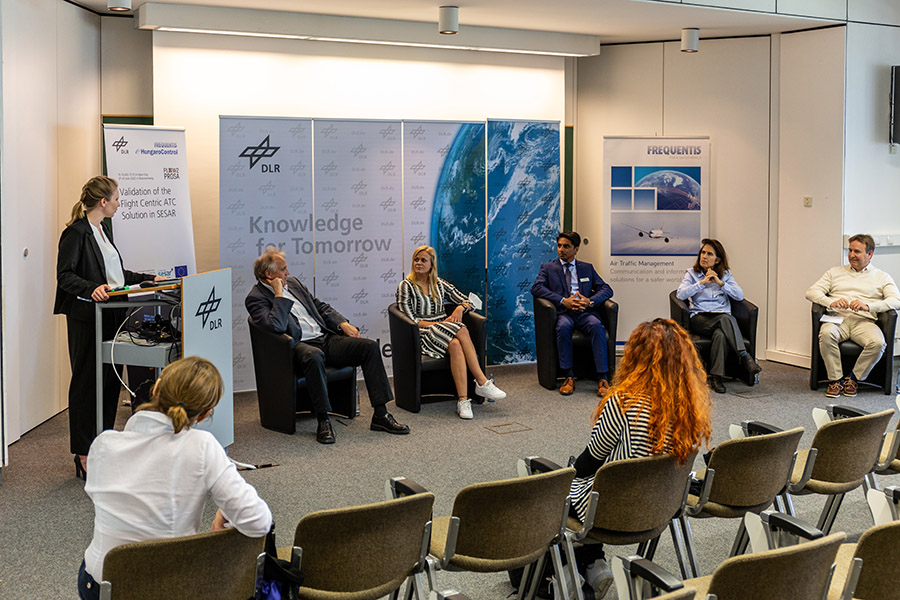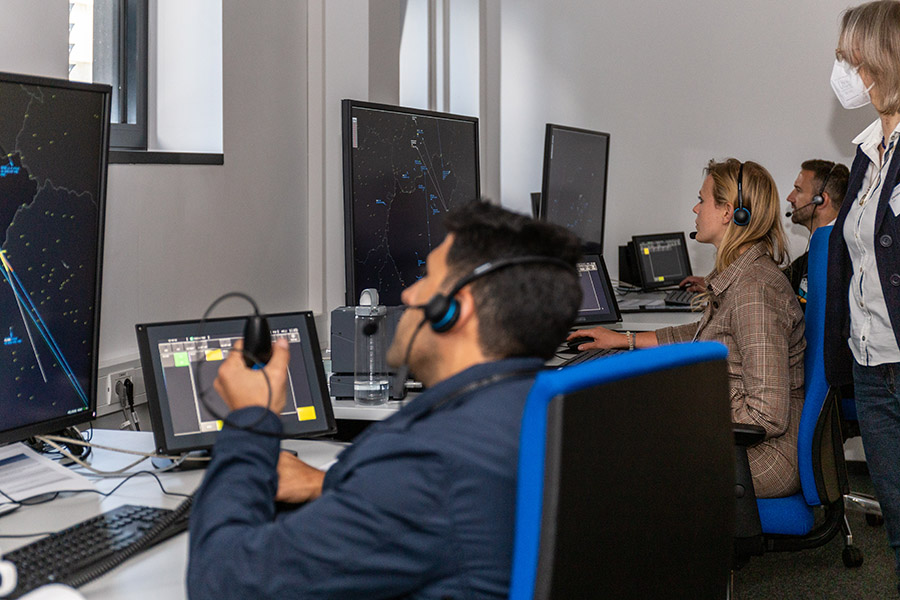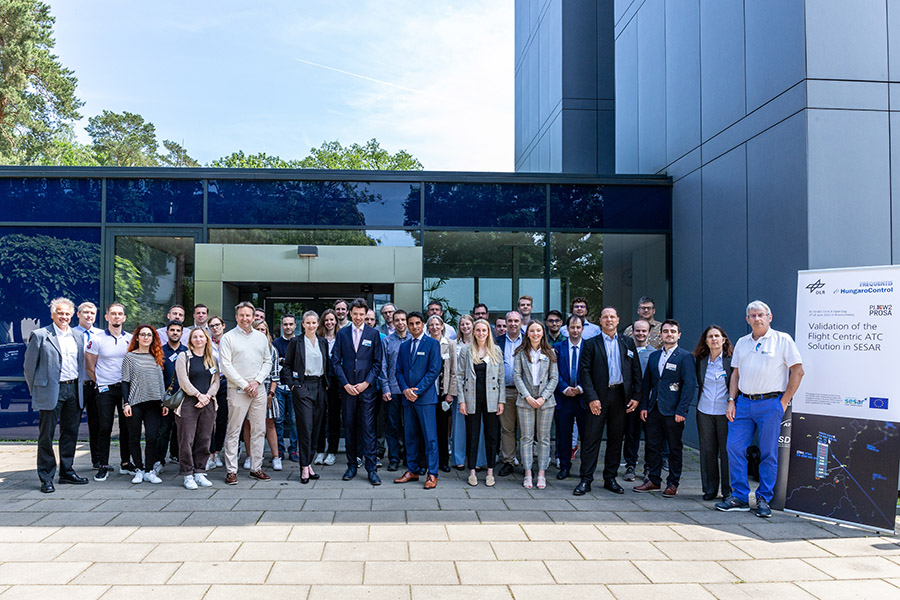In the future, the airspace in Europe may no longer be divided into individual sectors. Instead, the creation of a sectorless (flight-centric air traffic control - ATC) airspace at country level or even across countries is conceivable. In such a concept several controllers will be responsible for controlling entire flights from entry to exit of the sectorless area.
At the end of May, SESAR 3 JU members, German Aerospace Center (Deutsches Zentrum für Luft- und Raumfahrt; DLR) in cooperation with Frequentis, conducted real-time simulations to validate the SESAR Solution, flight-centric ATC. The tests were done within the context of the SESAR2020 PJ.10-W2-73 FCA Exercise 002. In this exercise, the Hungarian airspace was simulated as a sectorless area above FL325 using airspace and flight plan data provided by HungaroControl. Fifteen controllers from six different air navigation service providers (DFS, ENAIRE, ENAV, PANSA, Oro Navigacija and UkSATSE) worked on 15 controller positions to control the air traffic within the Hungarian flight centric area and the adjacent airspaces. For a realistic implementation of the air traffic controllers' clearances, additionally ten pseudo pilots supported the simulation. All 25 workstations were set-up at the DLR Air Traffic Validation Center and equipped with the X10 Voice System by Frequentis to simulate air/ground and ground/ground communication during the simulation and to validate the concept of wide area communication.
The aim of the campaign was to validate the operational feasibility of flight-centric ATC in normal, abnormal and degraded mode scenarios. For this purpose, nine different traffic scenarios were performed during the validation exercise. Besides different traffic volumes ranging from medium to very high traffic density, thunderstorm scenarios, emergency descents and loss of communication scenarios, as well as the failure of individual systems such as the mid-term conflict detection (MTCD) breakdown and the connection failure between radar HMI and VCS panel were simulated. Furthermore, the operational applicability of the wide area communication system was investigated and validated in the different scenarios.
As part of the EU-funded SESAR research project PROSA (PJ.10-W2-73 FCA) DLR, Frequentis AG and HungaroControl have developed a concept and the necessary tools for Flight Centric ATC in the Hungarian airspace. An important tool of the flight-centric ATC concept is the conflict detection and resolution tool (CD&R) in combination with the less impacted flight algorithm (LIFA). In the event of a conflict, the CD&R tool detects potential conflicts between two or more aircraft with a look-ahead time of 20 minutes. Based on priority rules, the LIFA tool determines which of the conflicting parties is required to take evasive action for each conflict. The controller without the right-of-way aircraft receives appropriate conflict resolution suggestions from the system. These support the controller, especially in complex traffic situations, by resolving a conflict without creating a new conflict within the next 15 minutes. Another essential tool for controlling air traffic in a sectorless manner is the filtering algorithm. The algorithm filters out all non-relevant aircraft for the air traffic controller in order to ensure clarity at all times.
Frequentis deployed its latest communication solution to provide voice-as-a-service, enabling the successful integration of its X10 voice communication systems to the DLR platform. The wide area communication tool enables the controller to control the voice system via the radar HMI and anyhow due to safety reasons operate on the HMI of the voice CWP standalone. The HMI of the voice CWP is adapted to the flight centric operational needs. The voice system includes an assignment service allowing a flexible assignment for aircrafts to controllers. The X10 Voice System by Frequentis provides an interface to receive flight IDs and aircraft positions. This information is used to map the aircraft position to the radio/ frequency channel. The FC VCS allows a flexible frequency selection.
The results of the validation campaign will be evaluated in the coming weeks and subsequently published in PJ.10-W2-73 FCA V2 Validation Report.
More about PROSA: https://www.sesarju.eu/projects/prosa2
More about flight-centric ATC: https://www.sesarju.eu/sesar-solutions/flight-centric-air-traffic-control

“Pseudo-Pilots implement the air traffic controllers clearances”

Panel Discussion on Flight Centric ATC during the Open Day”

Air traffic controllers validating the Flight Centric ATC concept”

Project Team and validation campaign participants“
